Bienvenido a peru, beep, beep, paga, paga 🇧🇴 🇵🇪
It’s taken me a little while longer to write this latest update because Peru and I have gotten off to a rough start. I’m learning more by the day but I’m still not sure what to make of many of my experiences here. As with all of the countries I’ve cycled through there have been many friendly and positive interactions with people who are curious about me and my trip. Unlike in those other countries, though, Peru has offered up negative experiences in near equal measure.
After spending a night in Copacabana, Bolivia I hit the road intending to ride along the north shore of Lago Titicaca. Just beyond the city of Achacachi I encountered a French cycling couple that I had met a few weeks earlier. We’d end up riding together for the next week or so.
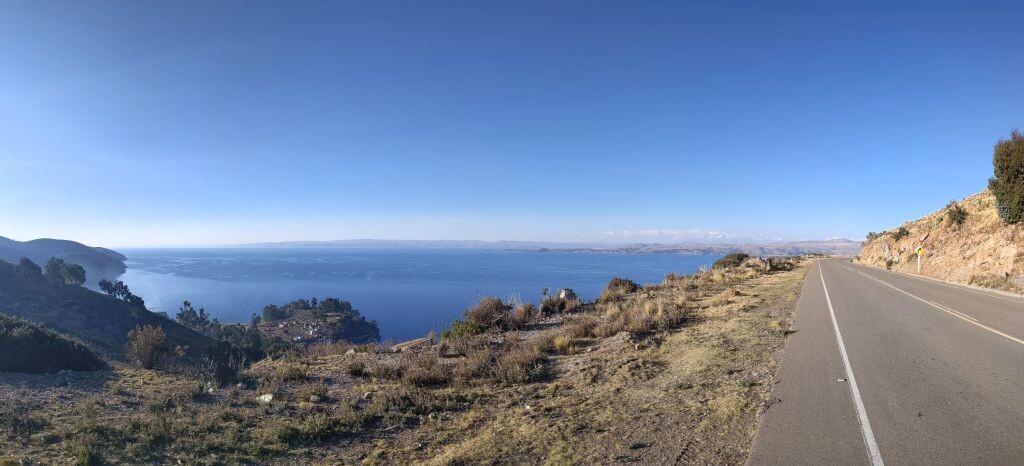
Riding along Lago Titicaca

The barge crossing at Tiquina
For most of the north shore of Lago Titicaca I would remain in Bolivia before crossing the border between the towns of Puerto Acosta and Tilali. I found this stretch of road to be really nice on account of the gently rolling hills, the beautiful scenery, and the relatively quiet roads. Before reaching Copacabana, I had dipped into Peru for just one night and had managed to find an ATM so I had some cash on hand. I clearly remember my first “plato del dia” in Peru because it was a marked upgrade over the past few weeks; the food in Peru is good, especially the huge variety in fruits and vegetables. After cycling now for several months the novelty of eating Oreos and Doritos has decidedly worn off and I’m happy to encounter such an abundance of good, healthy food.
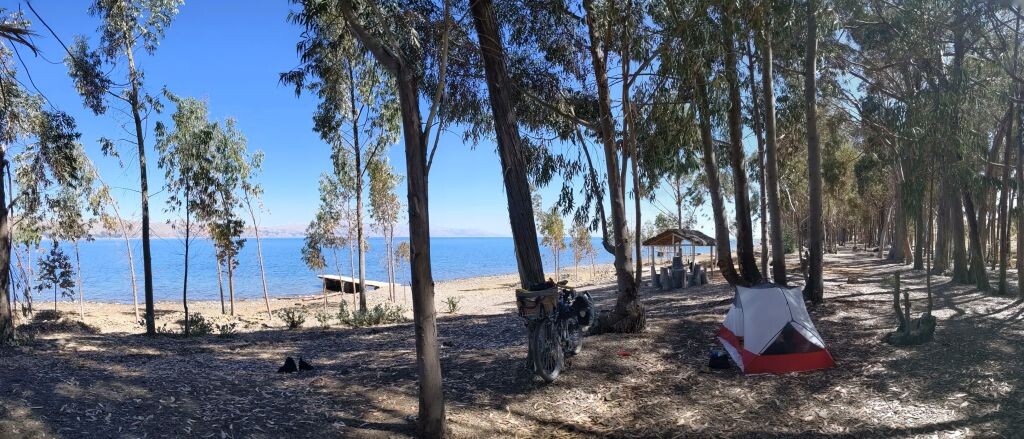
A most excellent campsite
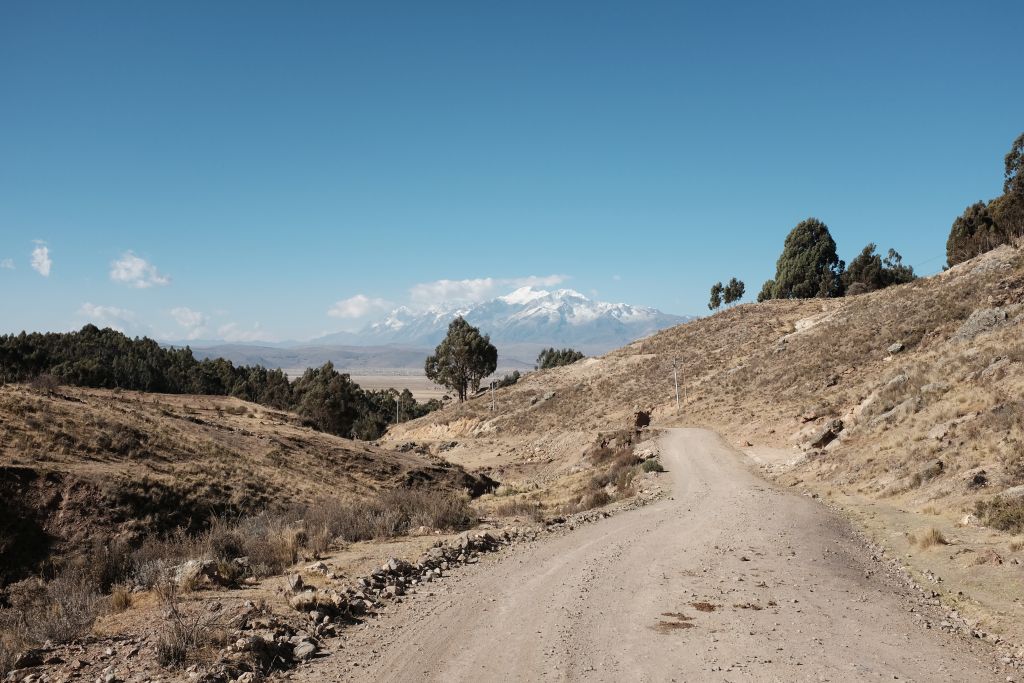
Felt good on this dirt road shortcut
One of our first stops in Peru was the city of Juliaca where we stayed at a Casa de Ciclistas run by Giovanni, a cyclist who welcomes other long distance cyclists at his place. From Juliaca to where I am now in Huancavelica, much of the cycling has been done on the 3S route, which has had its busy and its quiet stretches. Along that route I’ve met many friendly people like Giovanni who are excited to hear of others’ experiences and who can offer you a safe place to pass the night. There were the volunteer firefighters in Curahuasi who had a spare room for us with a kitchen and a shower. There were the police officers in Kishuara who let us make camp in the courtyard of their station. There was a hiker we met on the trail to Choquequirao who insisted we stay at his place for a few nights when we made it to Ayacucho. And there were the many gifts of food, of hot cups of soup, of bread, and of fruit along the way. I continue to run into many friendly people along the way who don’t have much but are very willing to share what they have.

The first stops in Peru
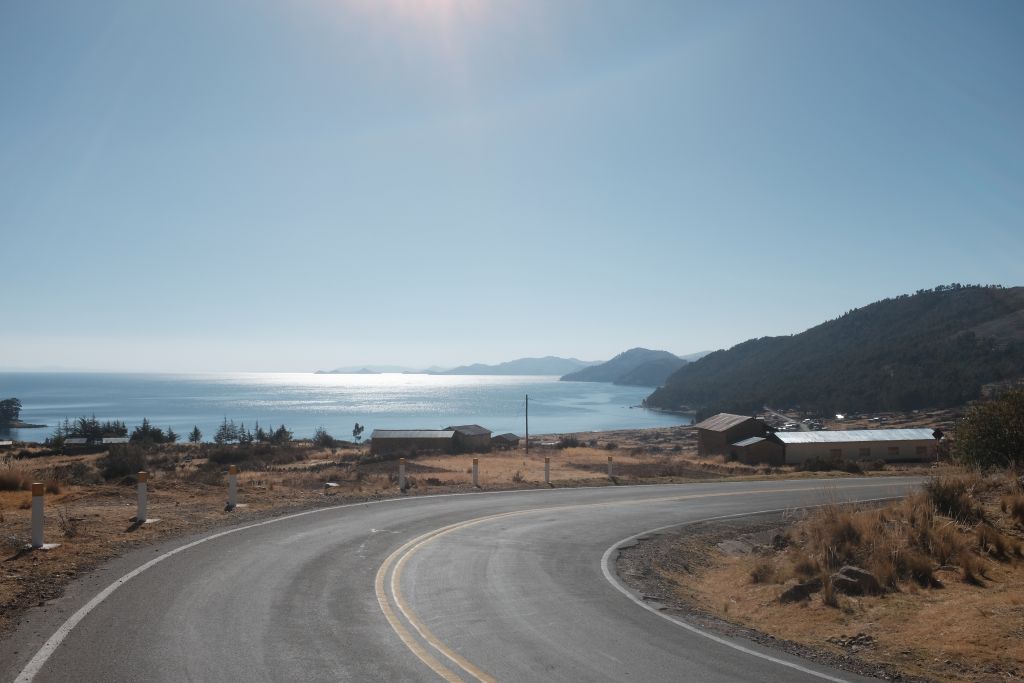
Lago Titicaca looking rather Mediterranean
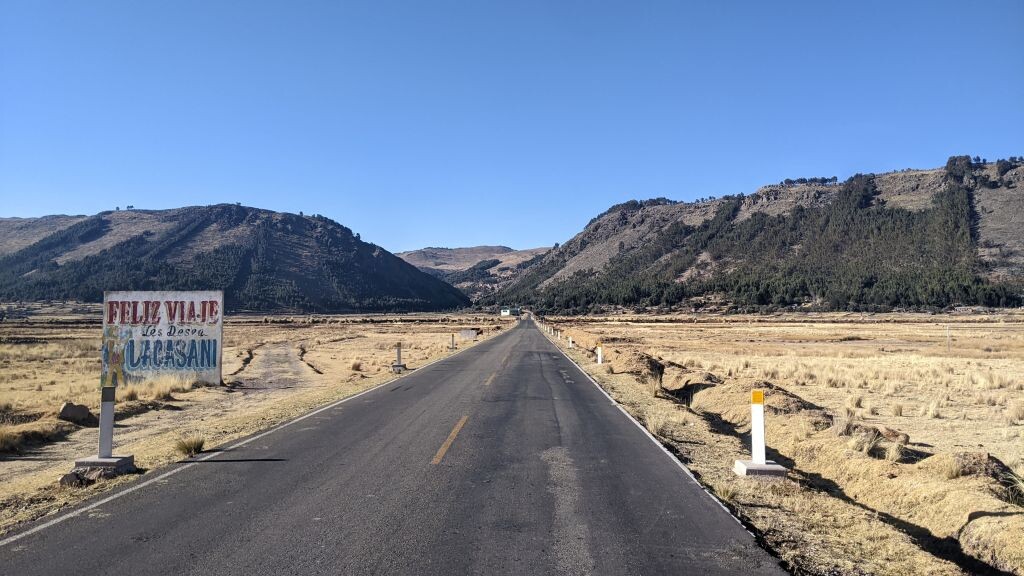
Feliz Viaje
Having entered Peru in its southeastern corner could be a possible explanation for my negative experiences so far; it is incredibly touristy. To the point that you begin to think that this place is being ruined by tourism and I’m doing my part. Especially in and around the city of Cusco with nearby sights like Machu Picchu, you get the feeling that for many people here you’re just a walking, breathing ATM that if continuously peppered with the proper barrage of offerings will eventually dispense money. But I took part in it all because I figured if I’m in the area then I might as well go see Machu Picchu and some of the other Incan archeological sites. So whatever this weird cycle is called, it continues.
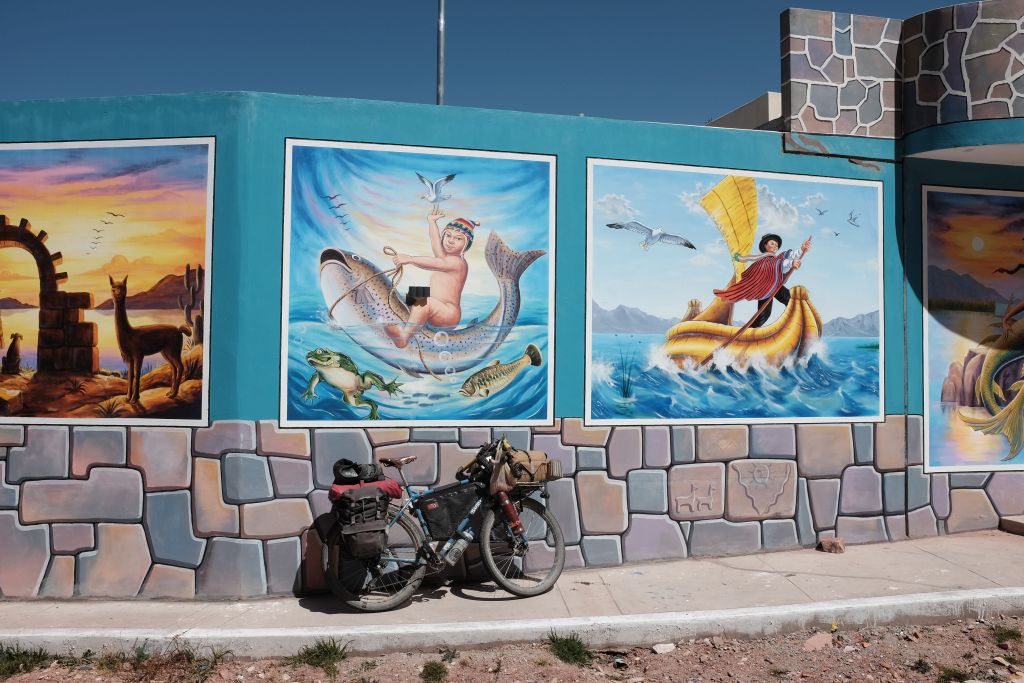
Fun fish kid mural
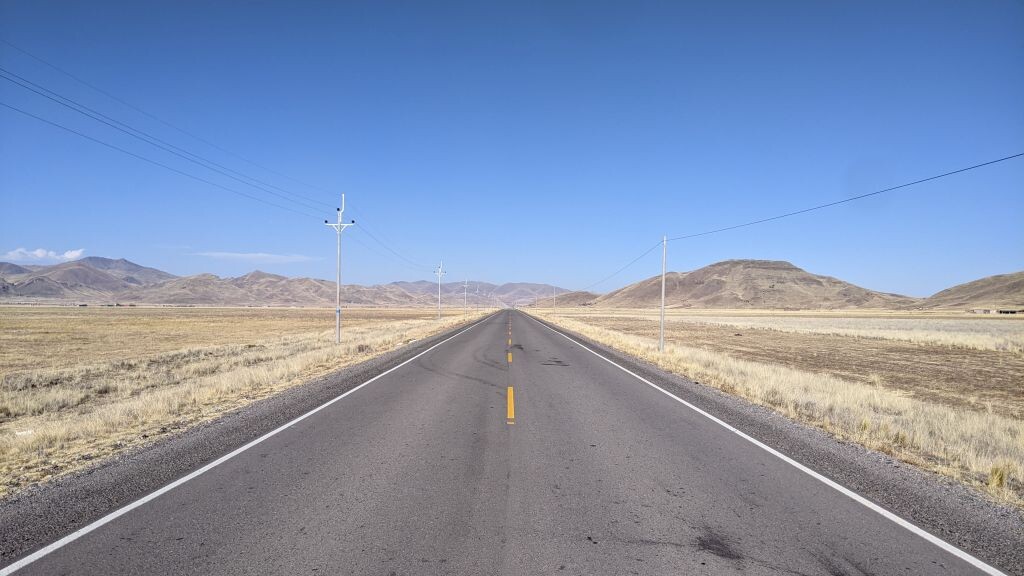
An uneventful stretch of road
One thing I liked about cycling in Bolivia was the constant waving and thumbs-ups that passers by expressed. If there’s one thing I like it’s a friendly wave to a fellow road user. The Peruvians, I think similarly attempting to say “hello,” honk their horns. That’s fine, I guess, but when there’s a busy stretch of road and there’s a few cars passing every minute your days become filled with beeps and honks and barbarous thoughts.
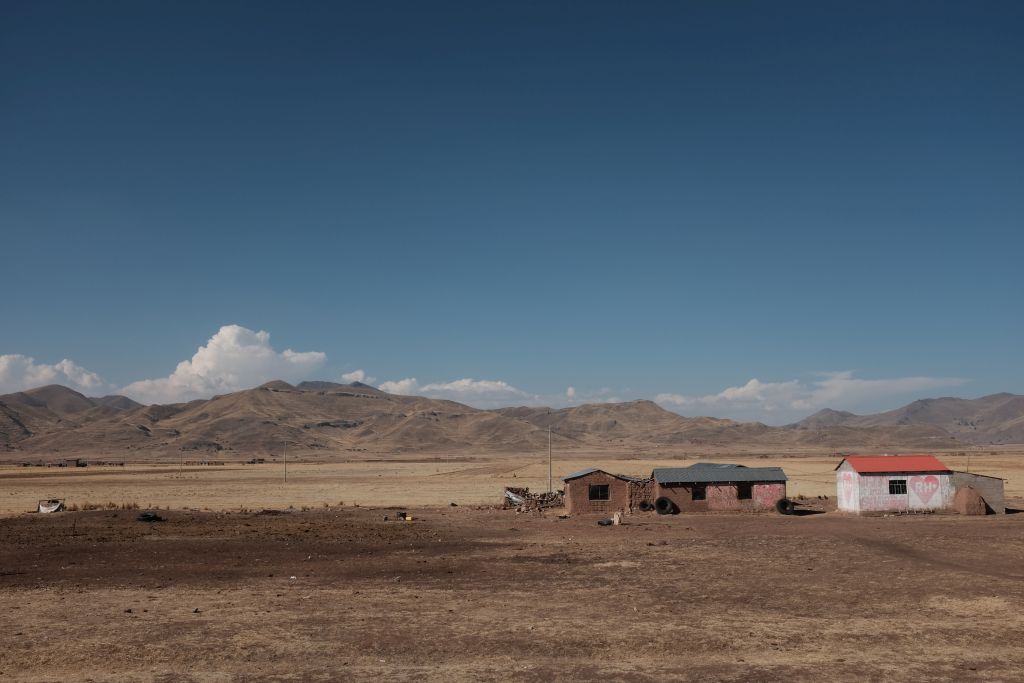
Felt like a Wes Anderson set
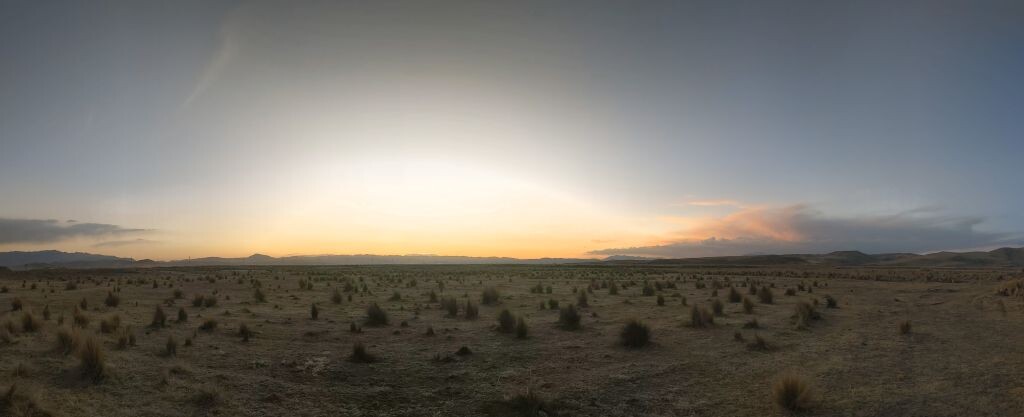
Sunset on our way to Juliaca
Lastly and most annoyingly are the constant shouts of “gringo” and “gringito!” At first it was kind of humorous to hear an old lady street vendor answer my yes or no questions with a “ya, gringito.” It was very clearly harmless. But there’s also a sizeable subset of people who yell it from across the road maliciously. I’m finding it somewhat humorous and silly to write about now but I’m noticing that it wears me down and closes me off. When you’re cycling down the road you’d rather just not make eye contact because you know half the time someone’s going to yell something stupid. In the end it just makes me want to put some music on and power through to the next country. When someone does want to genuinely chat with you you’re weary and suspicious.
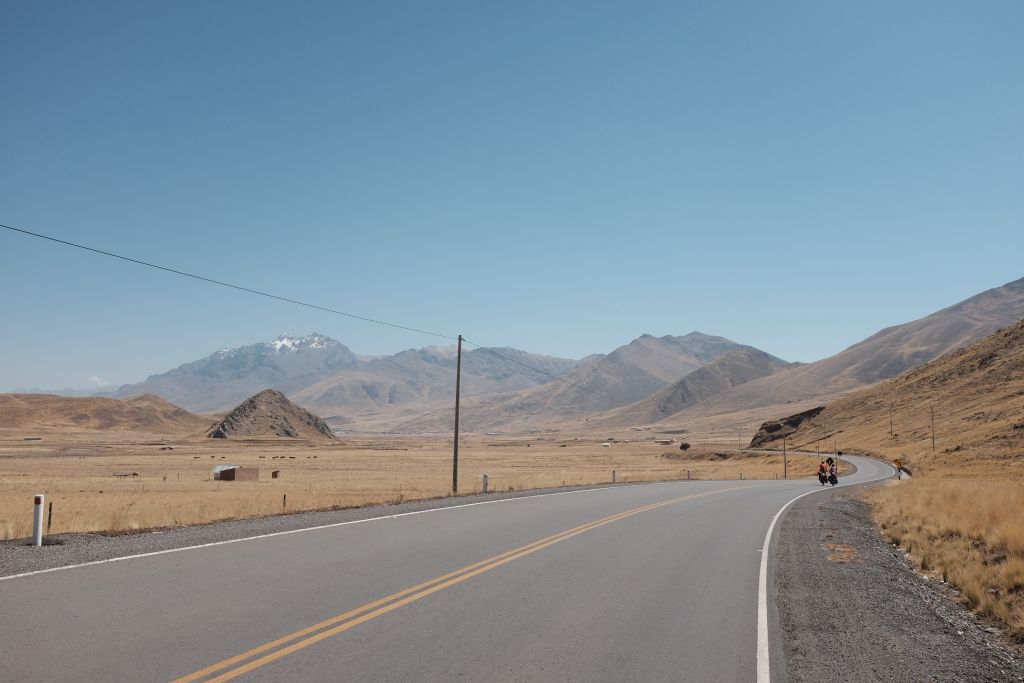
More long stretches
The interactions, even in very small locales, are usually a mixture of everything. In the small, small pueblito of Anchacuay I went around asking for a place to camp and eventually made my way to the self-avowed “town president.” He told me there was a disused community center where I could spend the night and there was a water tap up the hill. It was a good spot, I set up my camp, and went up the hill to get some water. A lady walking by, without stopping, asks me what I’m doing here and that I’m not welcome. No room for discussion. Nice talkin’ to ya lady! I have yet to feel unsafe on the trip but I’ve sure felt unwelcome. If the road is full of lessons, which I really believe it is, then I hope not to forget what that feels like.

Read books
The last general annoyance is probably people laughing at me. Maybe my Spanish has simply improved to the point that I’m understanding my environment more and more and they’ve just been laughing the whole time. Who knows? That being said, I may be a bit of a spectacle currently, having visited the barber once this year to trim my hair and beard. I’m a good bit taller than everyone around me and as if I was really really trying I bought a pair of sandals in Cusco that totally complete the consecrated look. I’ve taken the liberty of jumping around a bit chronologically to illustrate the point that my first month in Peru hasn’t been a resounding success. When I do get a chance to talk to seemingly normal people I bring up these gripes and try to understand why. The best explanation I’ve heard so far that I got from a man who stopped his moped to take a picture with me on the side of the road headed out of Lircay is that the mostly indigenous populations have a fear of foreigners. Stories circulate through the valley of serial killer white foreigners who kidnap children. I haven’t been able to confirm these stories but in my mind fear would be a good basis for these reactions.
The Ausungate circuit: the bike ride that should’ve been a hike
Now back to some cycling. After a week or so in Peru I linked up with another group of cyclists because together we had planned to ride the Ausungate circuit. We met up in the town of Pitumarca and spent the night in a hospedaje. We shed a lot of weight from the bikes and left many unnecessary items at the hospedaje intending to return after cycling around the mountain Apu Ausungate. Our intention here was to lighten up the bikes because from everything we’d read, this route was beautiful but difficult with many sections where we’d have to walk the bikes.

Ditching some heavy bags in Pitumarca
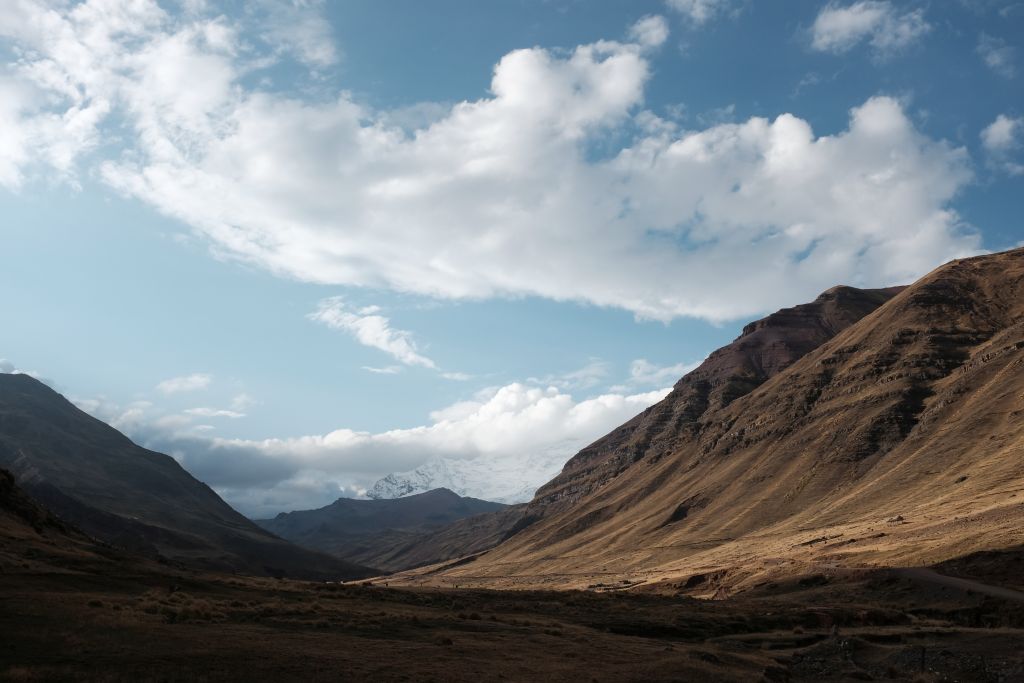
Our first glimpses of Ausungate
Late the next day we set off after lunch toward Chillca where we’d meet up with Juan and spend the night. We rented a small, spartan, unfinished house and spent the night cooking and sleeping indoors. Luxury. For the first day and a half the road was really pleasant, a gentle uphill on easy gravel. Ausungate came into sight for the first time and we stopped for lunch.
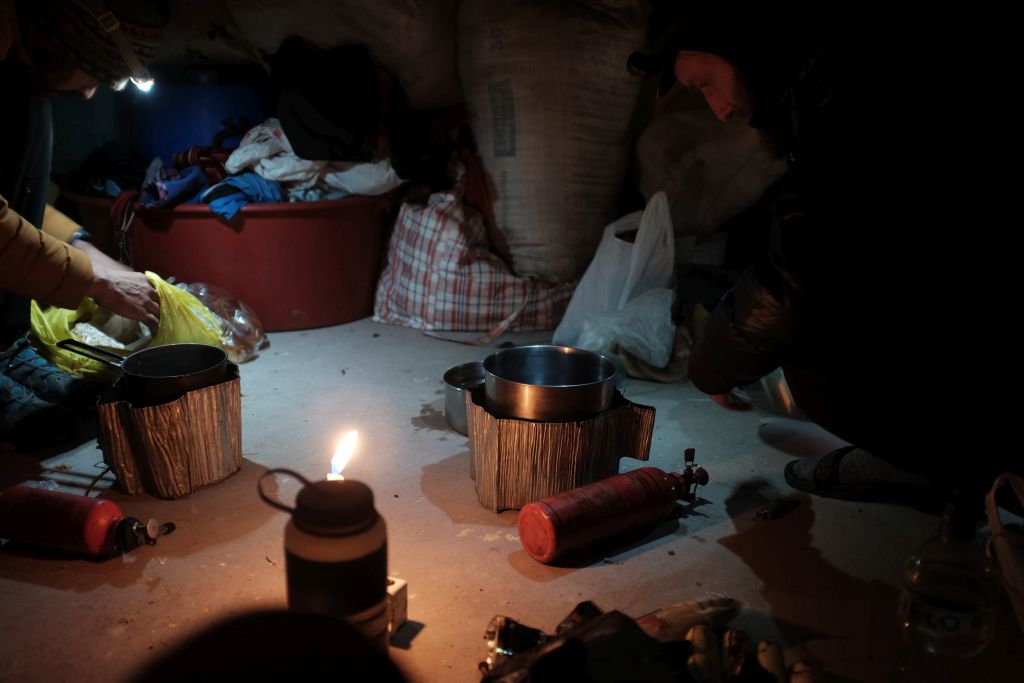
A candlelight dinner
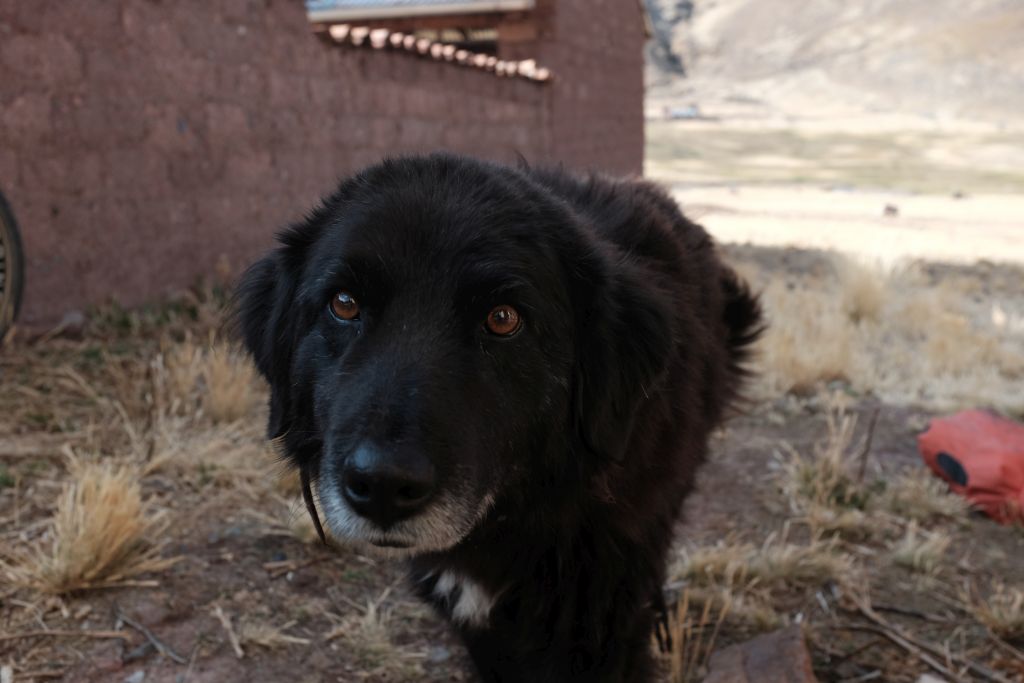
A sweet old dog
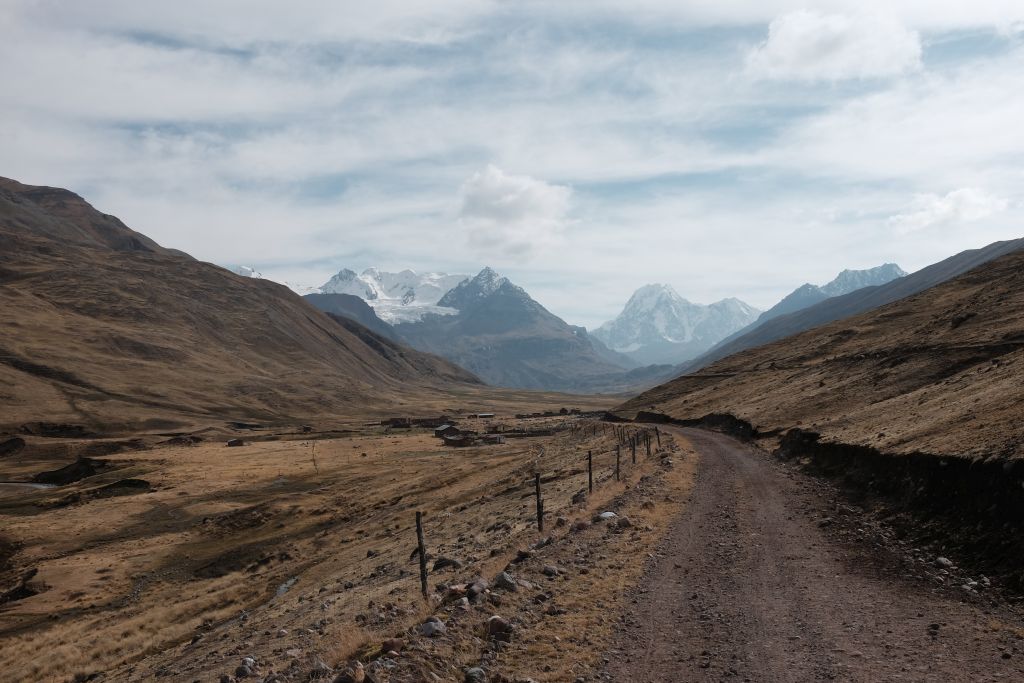
A nice stretch of road before the hike-a-bike
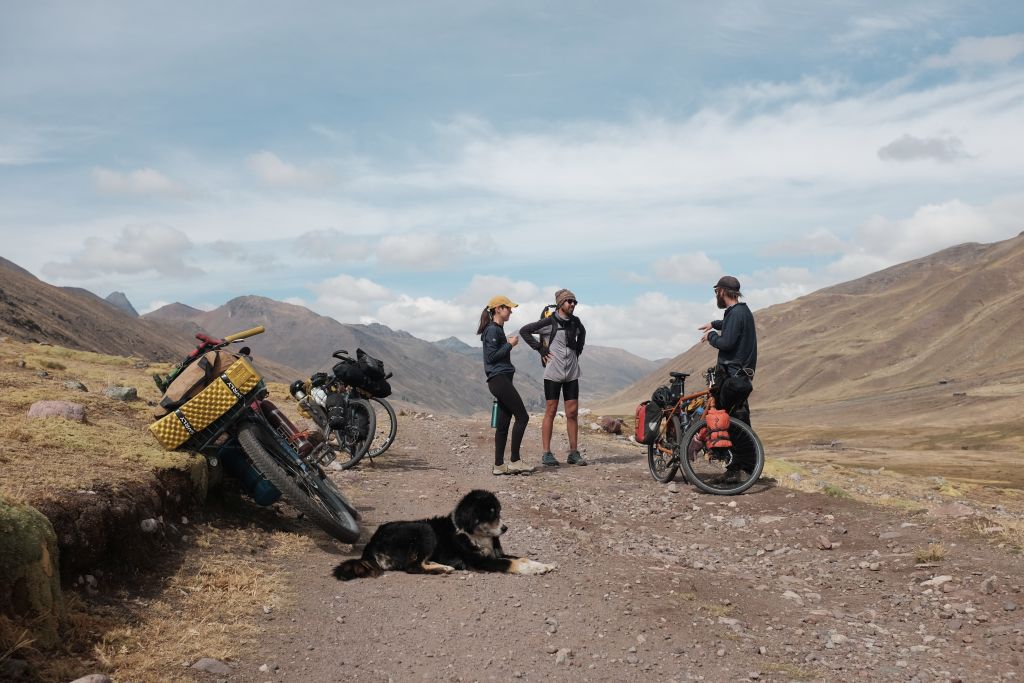
The gang plus one
Once the hike-a-bike started it never seemed to end. I quickly realized it probably would’ve been a more pleasant excursion if we’d ridden to Cusco, stored the bikes there, rented hiking packs, and hiked the circuit. I had some of my shortest distance days yet riding, hiking, pushing, and pulling my bike up and over passes. On the second day we covered a little more than 10 kilometers while “riding” over my highest mountain pass yet at over 5,000 meters. Not having found a campsite toward the end of the day we kept pushing on, “maybe there’s a better spot down the trail a bit further.” We were going downhill by now so no one protested too much. Eventually we turned up at a great spot, a small house owned by an American expat who’s been living in and around this valley for eight years. He’s built a self-sufficient hut for himself and makes money by teaching English and selling homemade energy bars. He had a shed for us to sleep in and we gladly took him up on the offer. The following morning we got a slow start taking in the changing views of Ausungate.

Riding off toward Ausungate

Ferdi fording a creek

A good spot for a lunch break
On the third day we entered a valley where a man was selling tickets. We hadn’t heard anything about an entry fee but he had some half-official looking tickets. “10 Soles per person.” he said. There were four of us. We questioned the legitimacy of the tickets and the price dropped, “20 Soles for four people.” Eventually we paid for the tickets and carried on. Several kilometers later a man without tickets was also demanding money. We told him we had tickets and showed them to him. “This is a different valley! Pay!” From here on out nearly every interaction with a local involved a demand for payment. We learned to ignore them and simply ride or walk on.
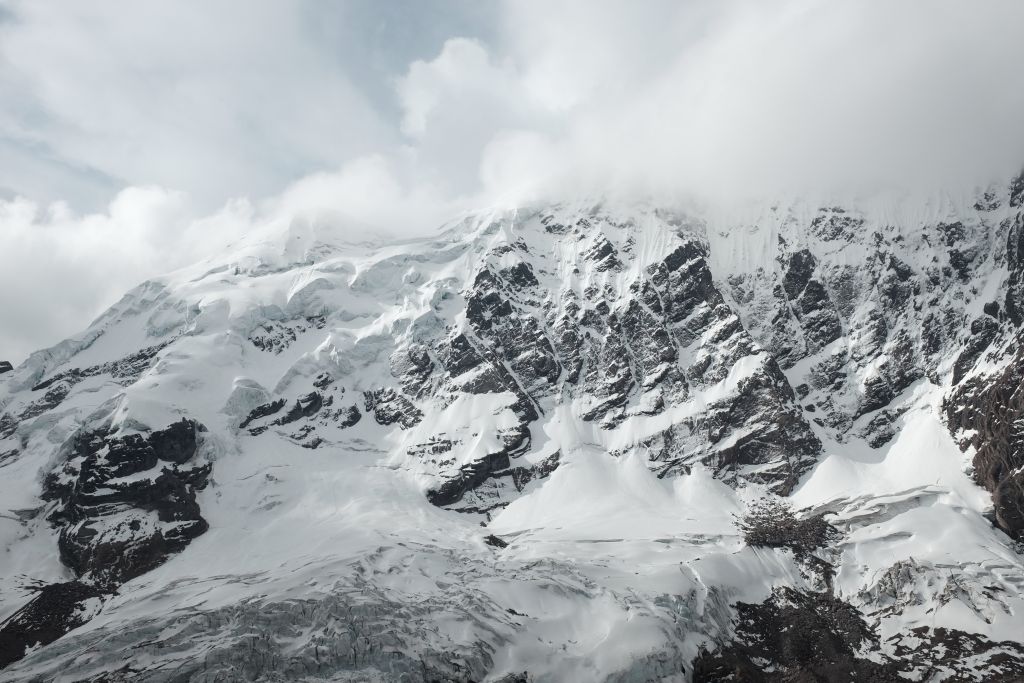
A snowy wall
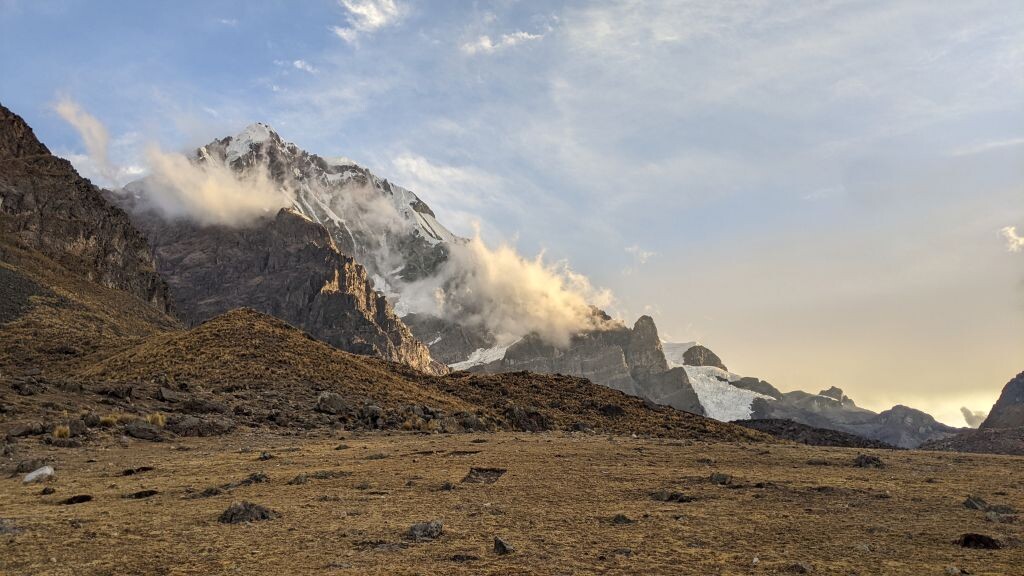
The last bit of light for today
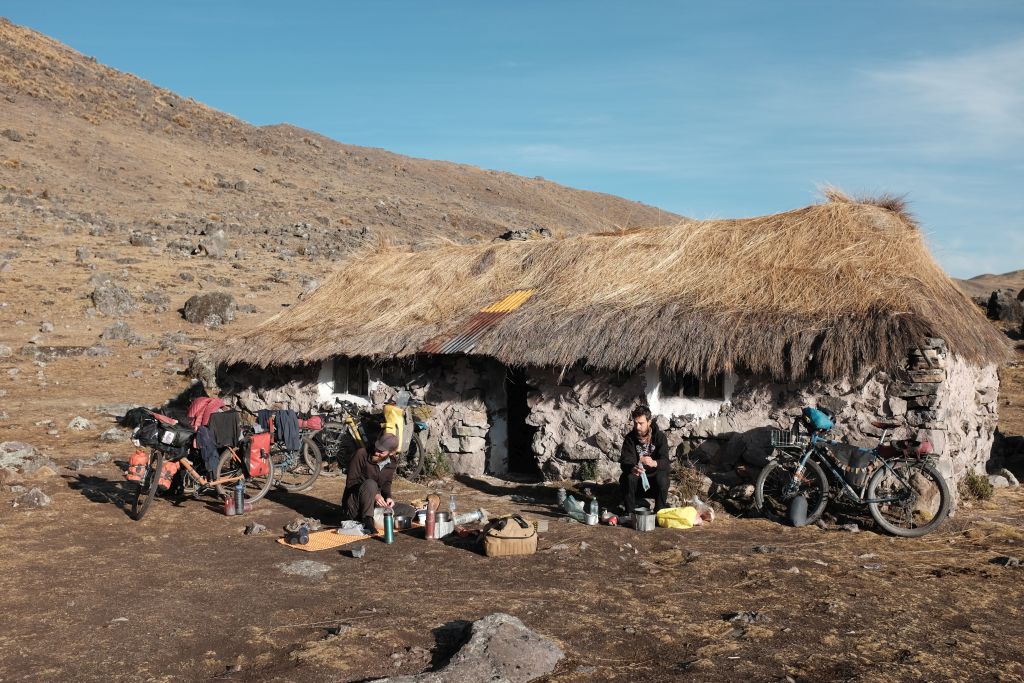
Breakfast at Tatonka's place
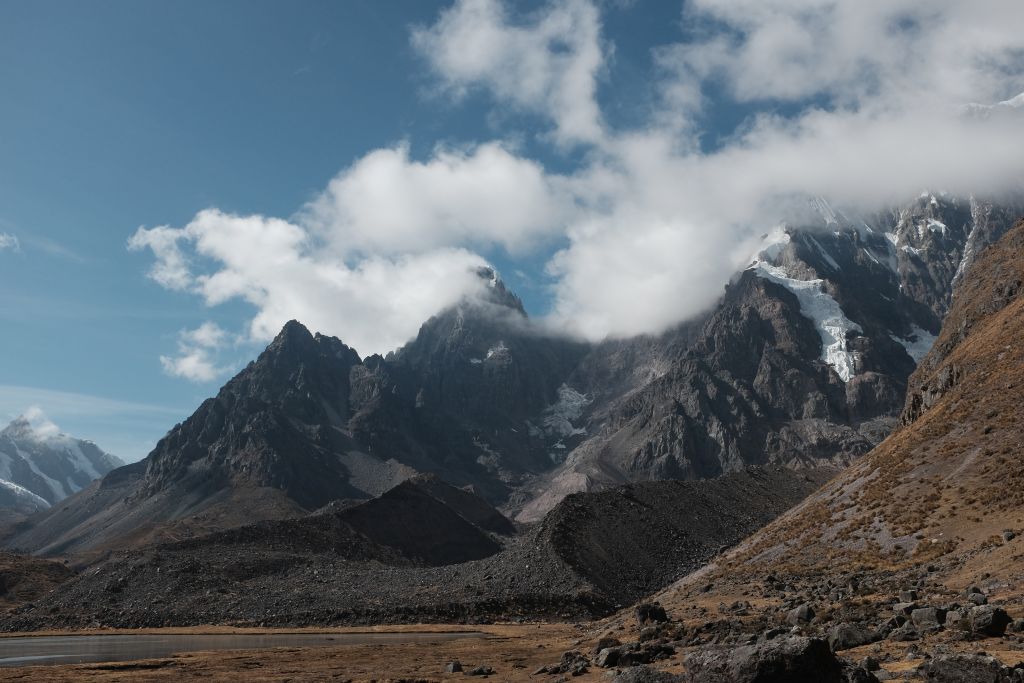
Ausungate up in the clouds
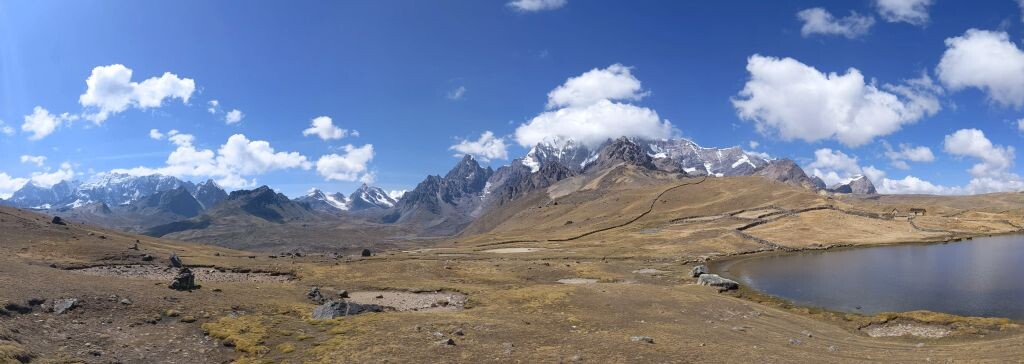
A lay of the land
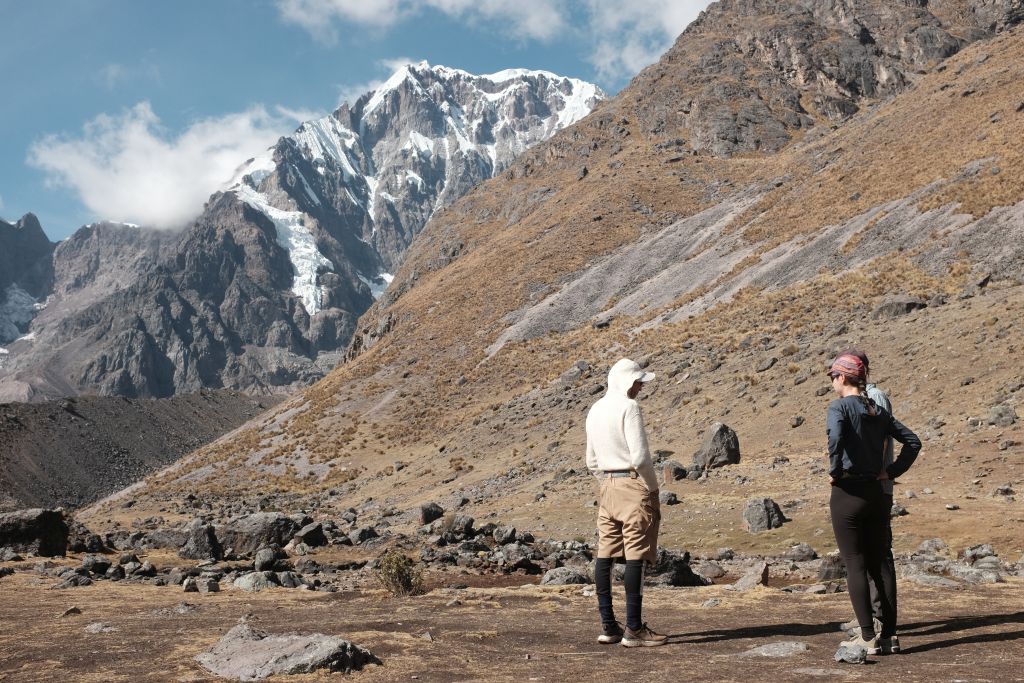
Having a chat in the morning

Taking the alternative route
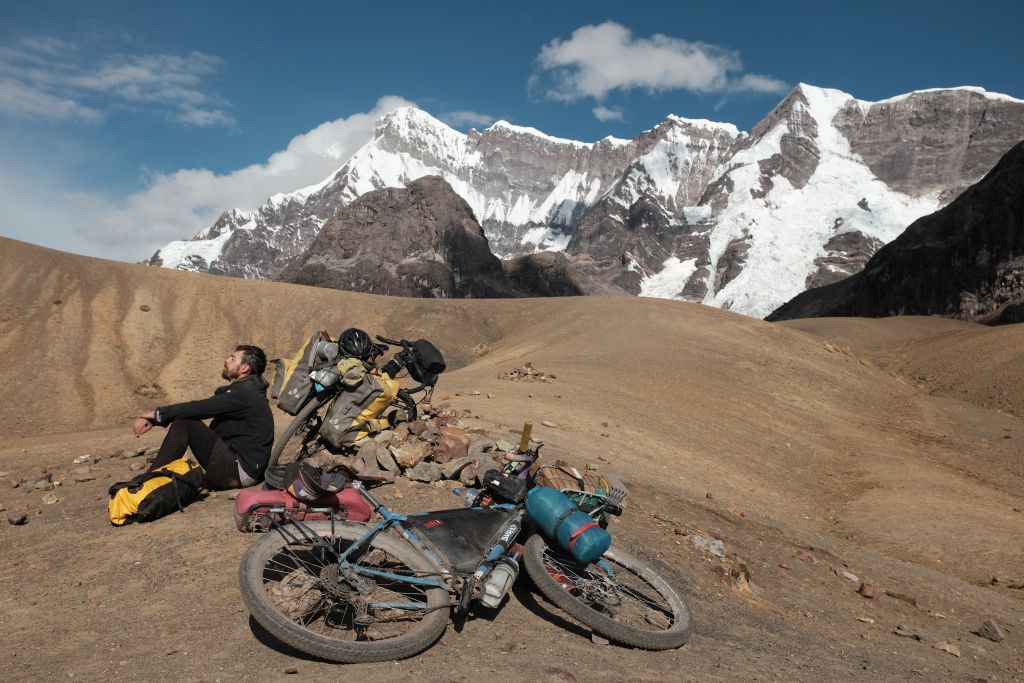
Cresting the pass and taking a break
On the fourth morning we awoke early around sunrise as usual, ate breakfast, and got ready to leave. It started snowing lightly at first and then more heavily. We all got back in our tents to pass the time while we waited for the snow to abate. About an hour later we got out of the tent to find a good three inches of fresh snow covering the bikes. Then there was a man there to collect a camping fee for the local community. He was very persistent and we eventually gave him some money that went straight into his pocket. I’m half-heartedly trying not to sound too condescending but these interactions quickly became routine and annoying. It didn’t take much to see that the money wasn’t going to the community at large. The snow continued falling on that last day. We descended quickly back to the town of Pitumarca passing a few old men along the way asking for more money, “no, this is a different valley!” We made it back to the hospedaje in Pitumarca, retrieved our stuff, and went to find some dinner.

Inspecting the damage from the tent

A brief snowfall in the morning
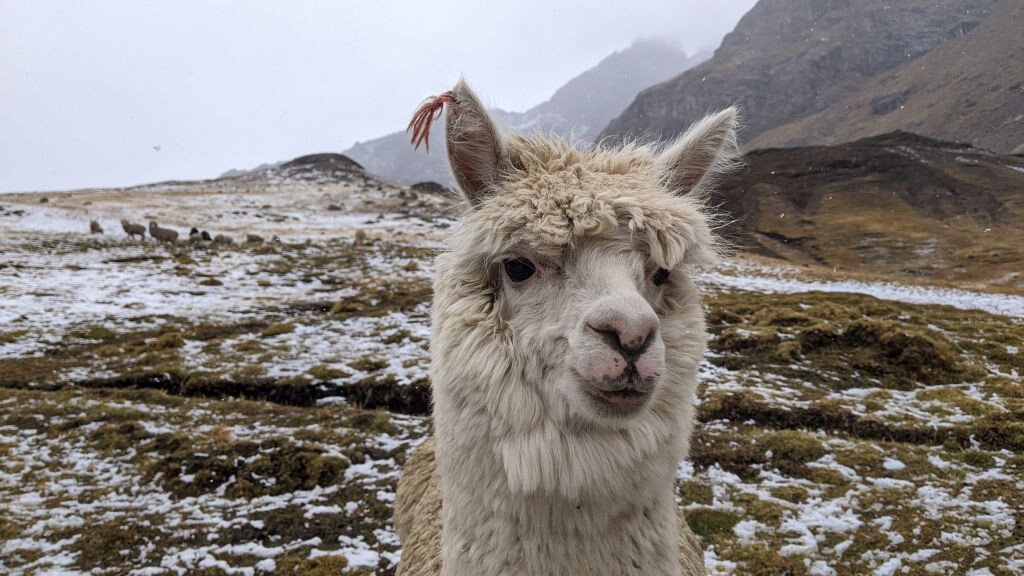
Alpaca
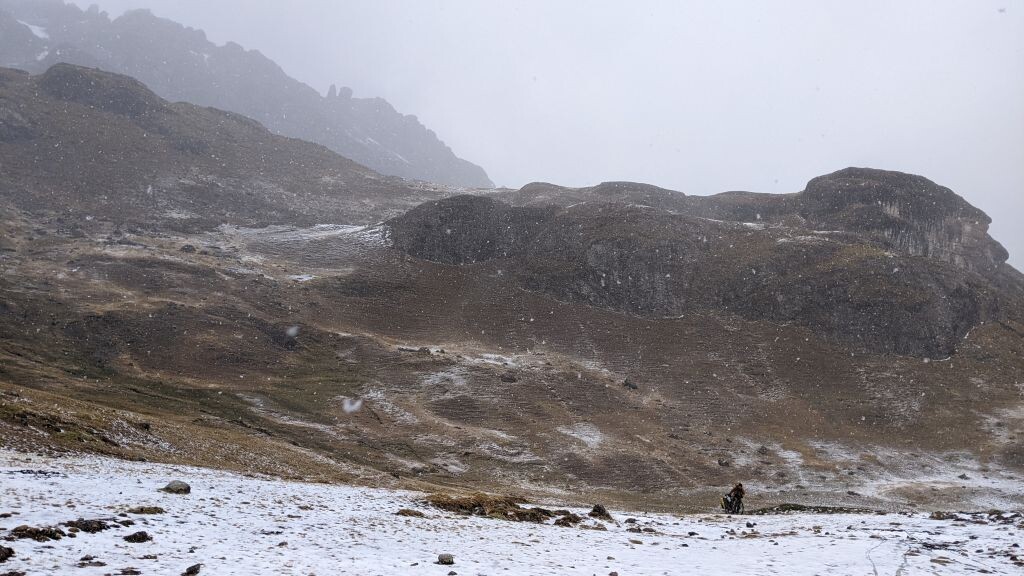
Having the time of my life!
Cusco, Machu Picchu, and surroundings
While in Cusco I took the time to see Machu Picchu and the sights in the Sacred Valley. The original Inca structures are undoubtedly impressive, though I felt at times they were a bit too clean and well restored having lost some of their archeological mystery along the way. None of the sites had any information placards so if you weren’t with a guide you didn’t know all too well what you were looking at.
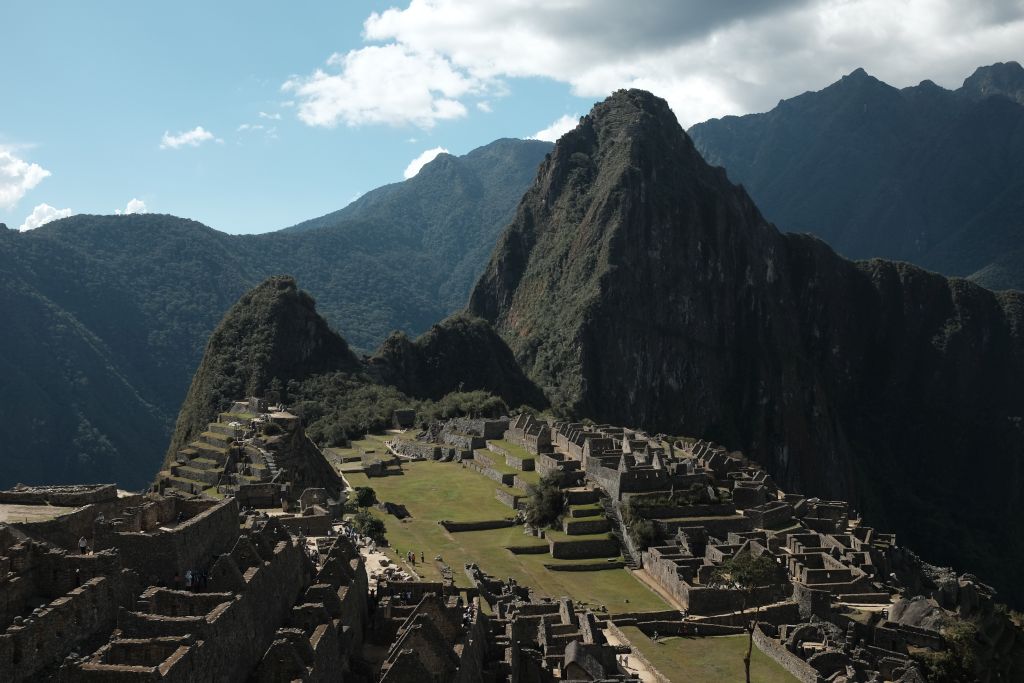
Machu Picchu
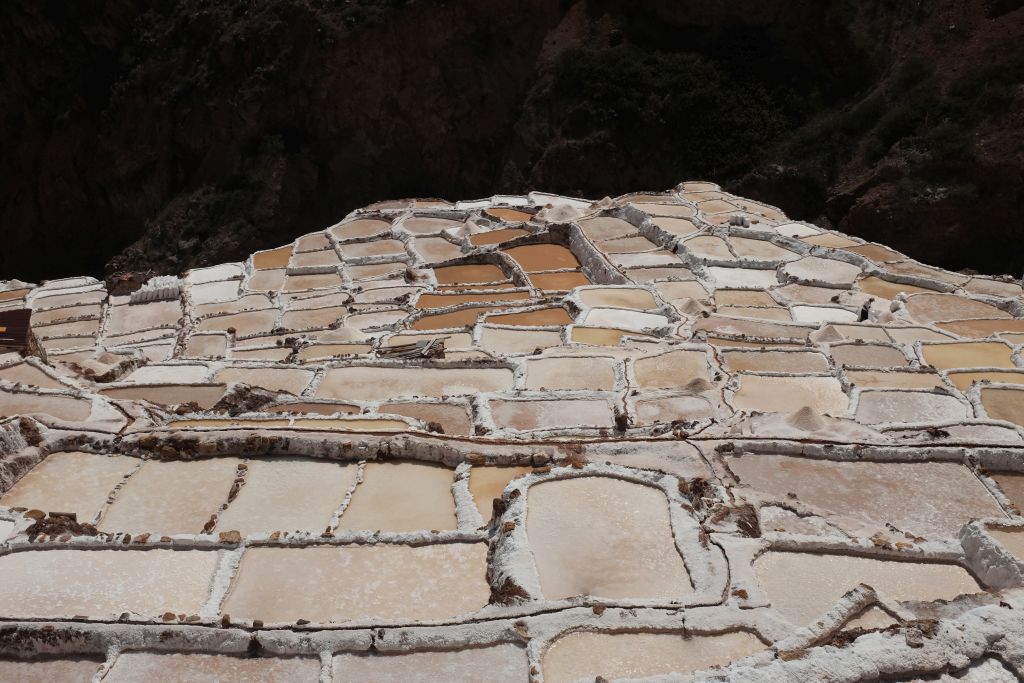
Salinas de Maras salt pools
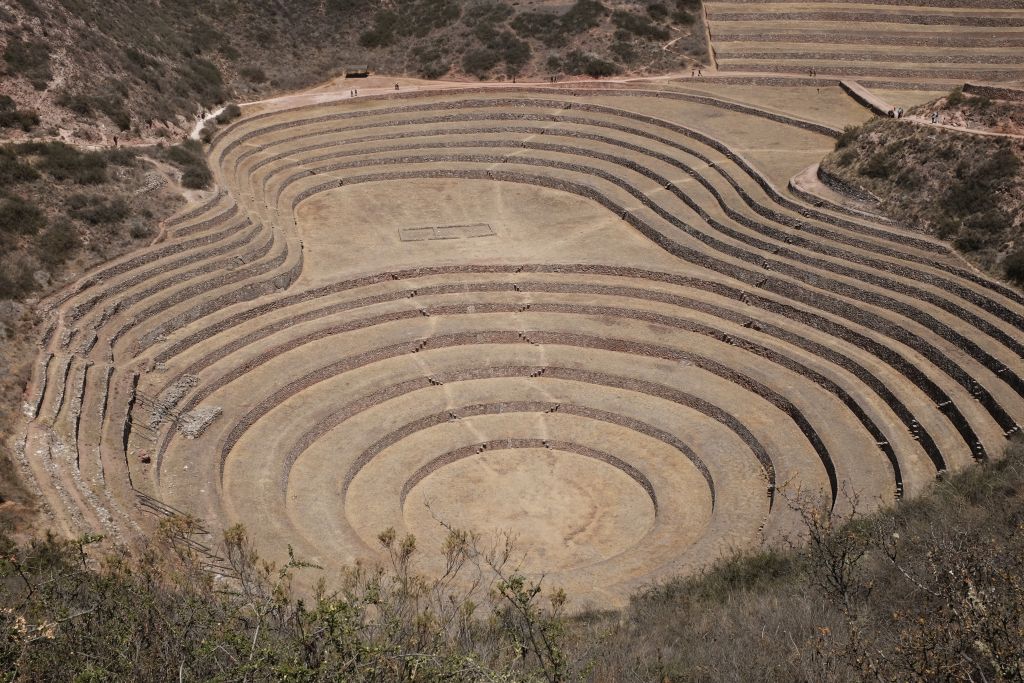
Fun shapes at Moray
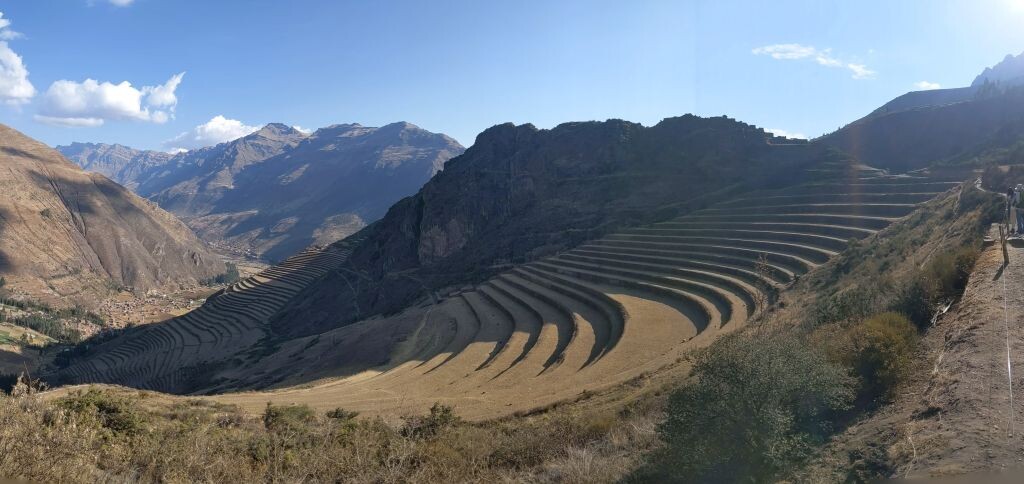
Terracing at Pisac
Leaving Cusco and seeing Choquequirao
After about a week or so in and out of Cusco I hit the road together with a Brazilian cyclist that I had met at my final Argentinian-Chilean border crossing. We’d seen each other sporadically since then but have now spent the past two weeks cycling from Cusco to Huancavelica.
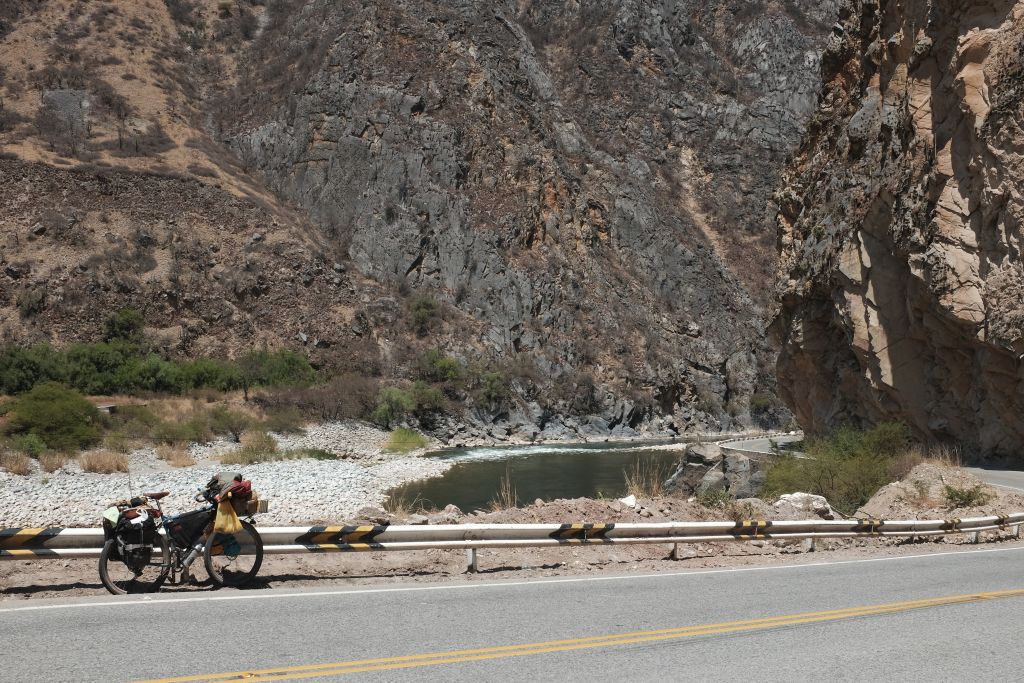
Having left Cusco on the nice road
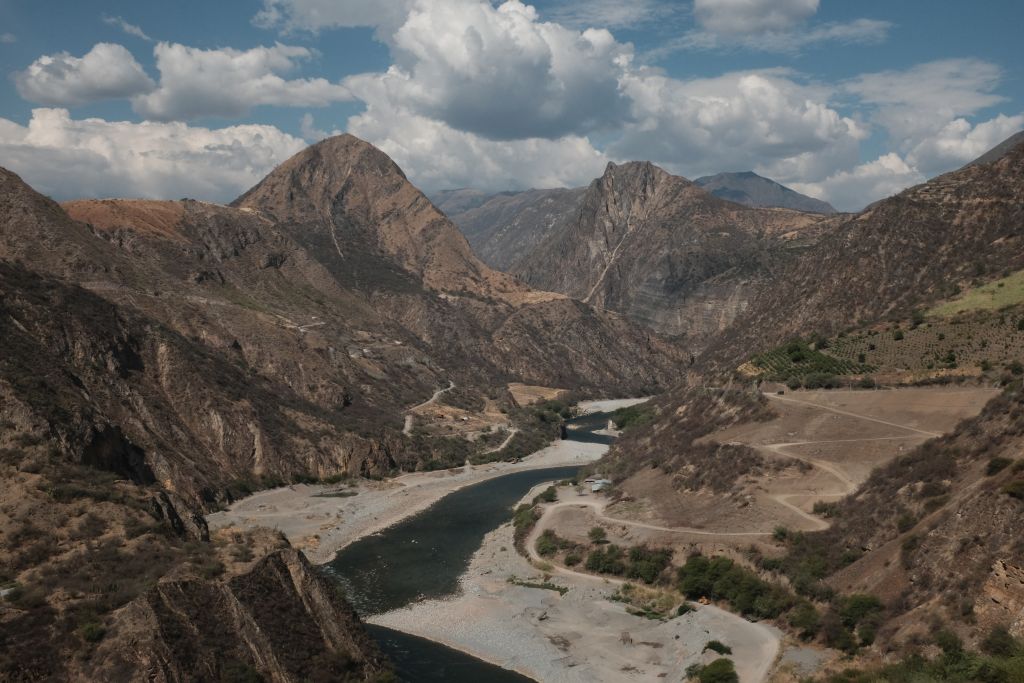
Leaving another river valley
Once again we were riding the 3S route, which seemed to repeatedly climb to over 4,000 meters and then descend to below 2,000 meters. For the past two weeks we’ve been averaging about 50 kilometers per day. 50 tough, hard-earned kilometers. Usually we spend a good day and a half climbing toward a pass. After going up and over the following 30 or 40 kilometers takes an hour or two as we descend back down. And repeat. And repeat it again. At the valley bottoms there’s usually a river for a lunchtime swim, much warmer weather, and plenty of sand flies. On one of the climbs we had gotten an early start and I was passing a truck parked on the side of the road. A man was felling some big eucalyptus trees with a chain saw running a long bar. He was already fairly drunk and offered to share his whiskey if I’d help him with the work. I carried on pedaling. I’m not sure why I mention it here but I’ve thought about that guy several times these past few days.
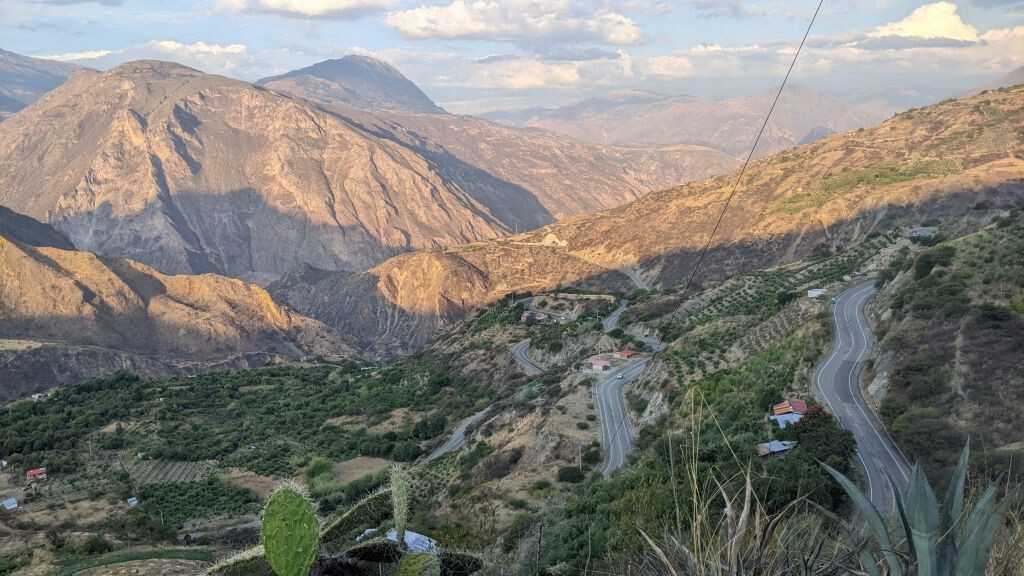
Up, up, up

Bomberos campsite in Curuhuasi
Along the way we spent three days hiking to Choquequirao, which is regarded as “the second Machu Picchu.” We stored our bikes at a hospedaje in San Pedro de Cachora and started our hike to the archeological site. At the end of the road you can see the destination less than 10 kilometers as the crow flies, the only problem being that there’s a river valley between here and there and it’s deep. We descended about 2,000 meters down to the river and then climbed back up to Choquequirao. I enjoyed this site much more than Machu Picchu simply because it was far quieter. It’s quite tough to get to and this prevents many people from making the trek. After Choquequirao we continued on toward Huancavelica where we plan to ride the Peru Great Divide trail. The towns we’re passing through along the way see far fewer tourists and overall the people have been friendlier and more welcoming, though the occasional annoying interaction does still catch me off guard. The negative interactions seem to feature more saliently in my mind but there’s still a long way to go in Peru so here’s to hoping it gets better.
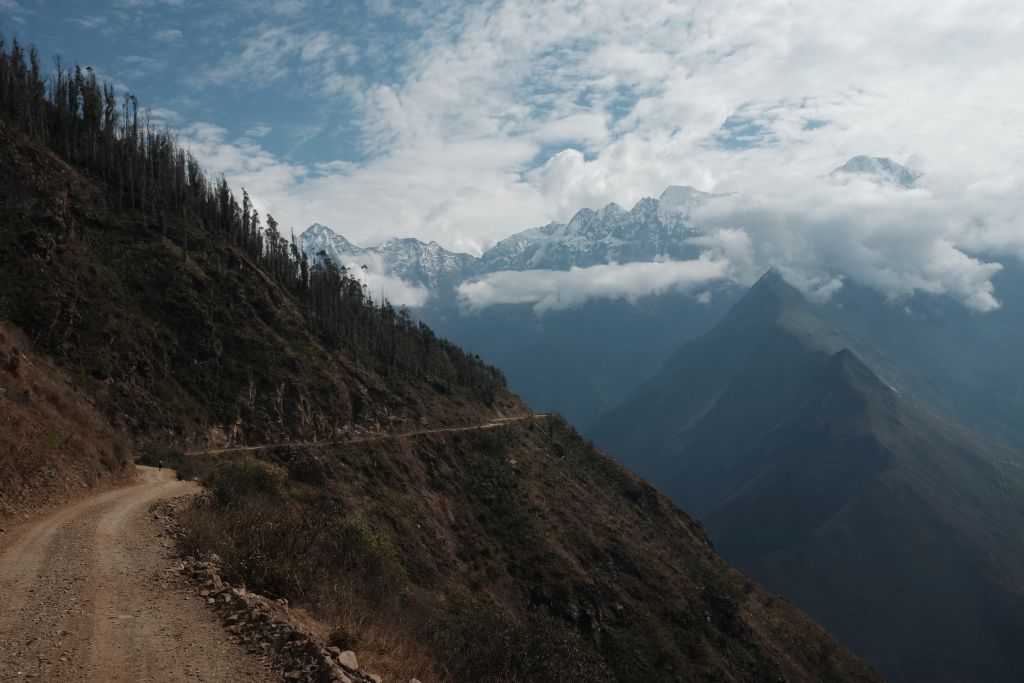
The road to Choquequirao
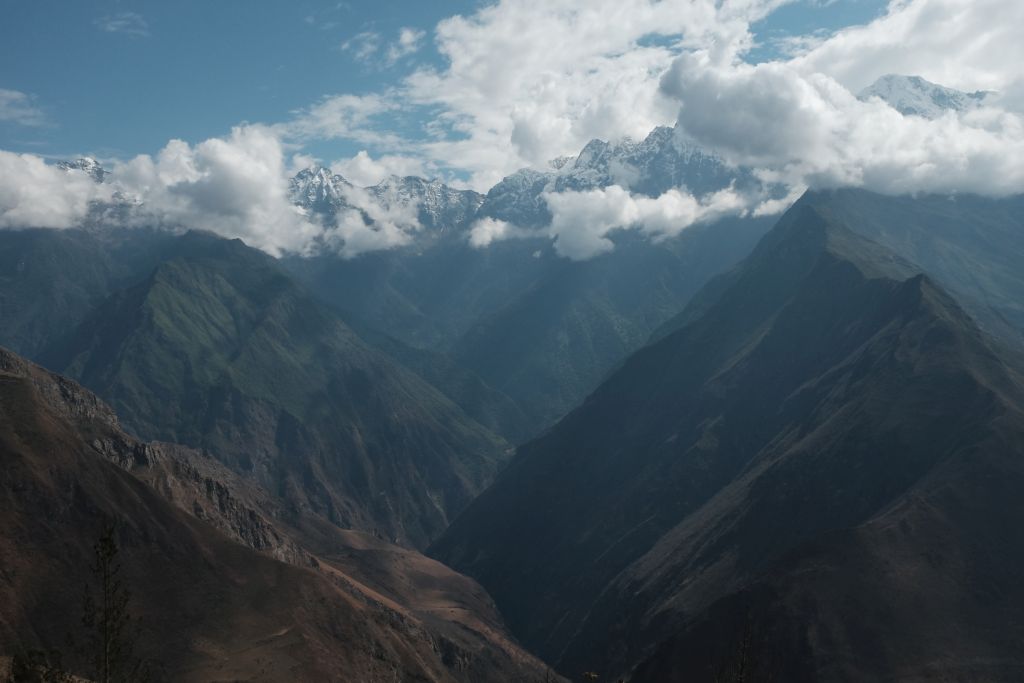
Good views on the way
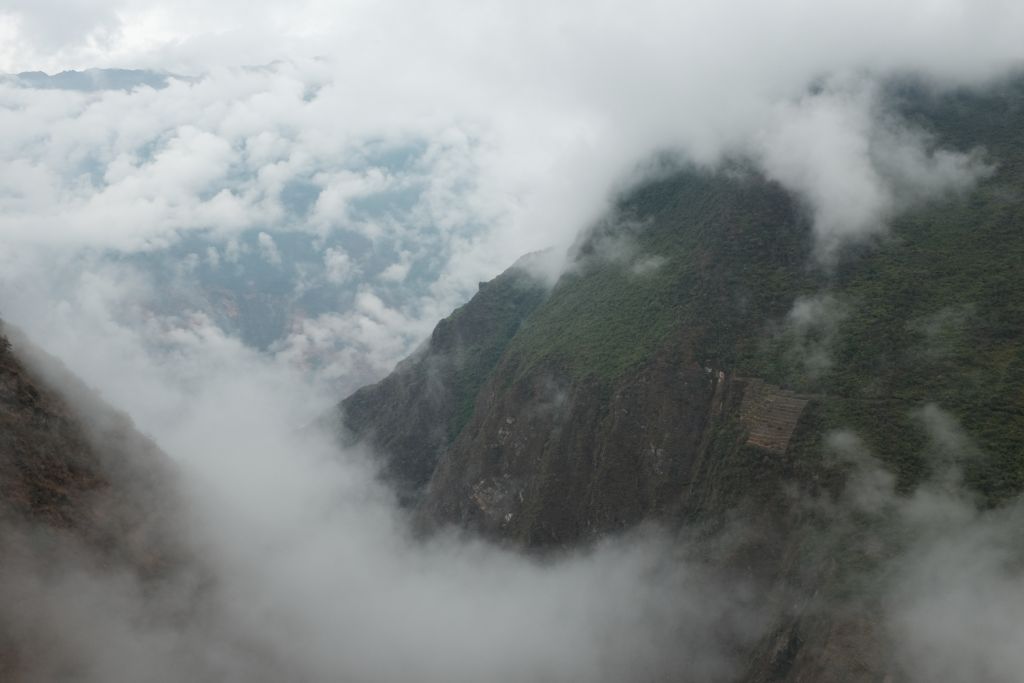
Terrases seen from across the valley
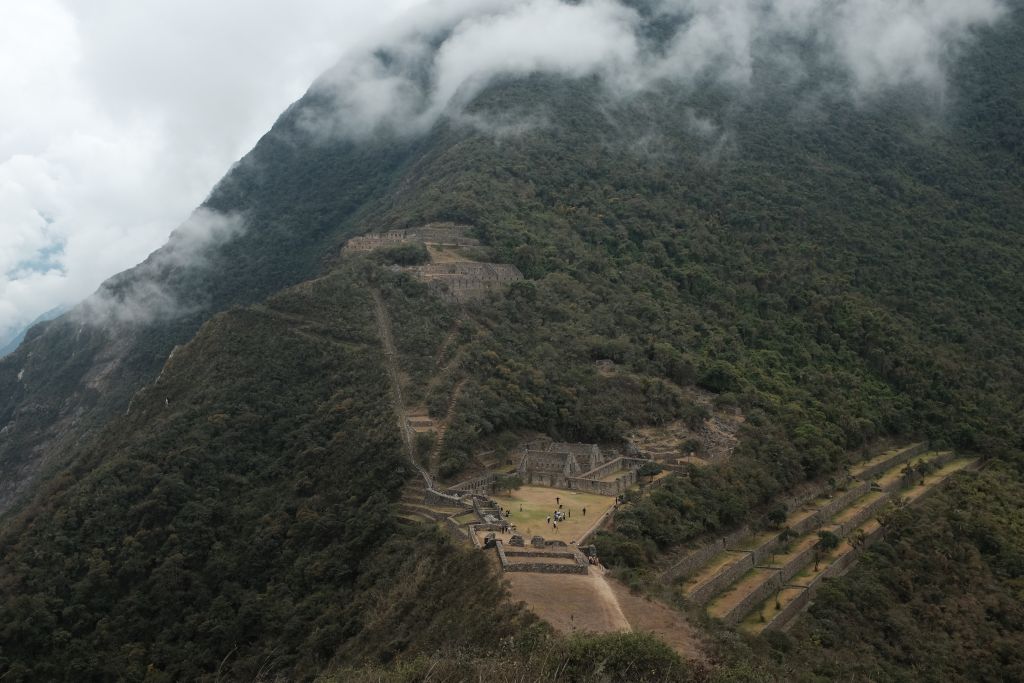
The main plaza at Choquequirao
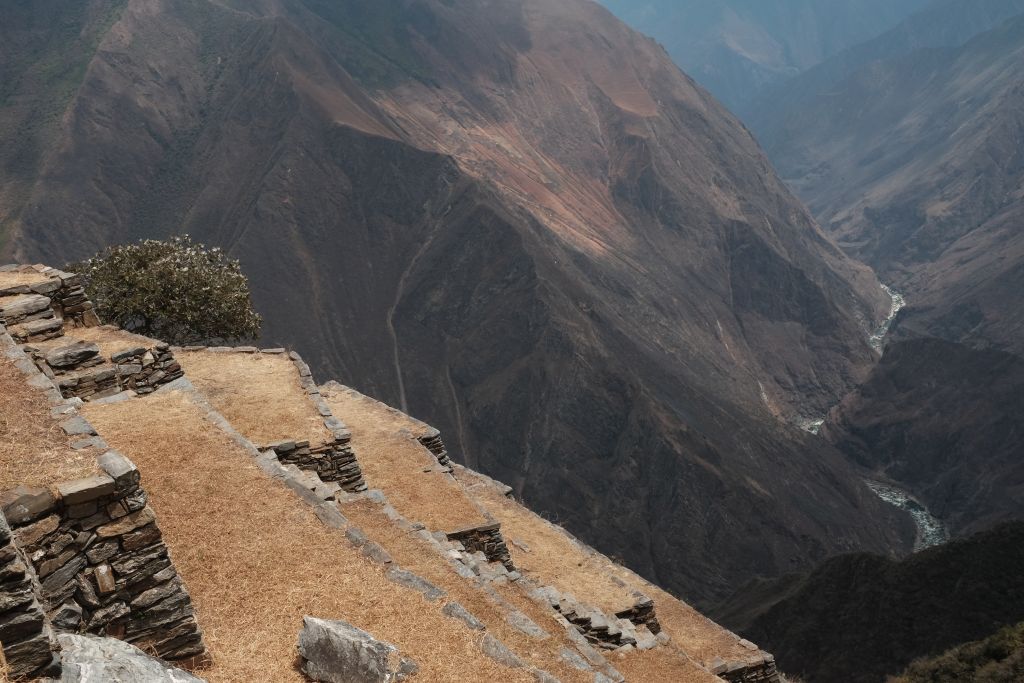
A steep drop down to the river

Llama terraces
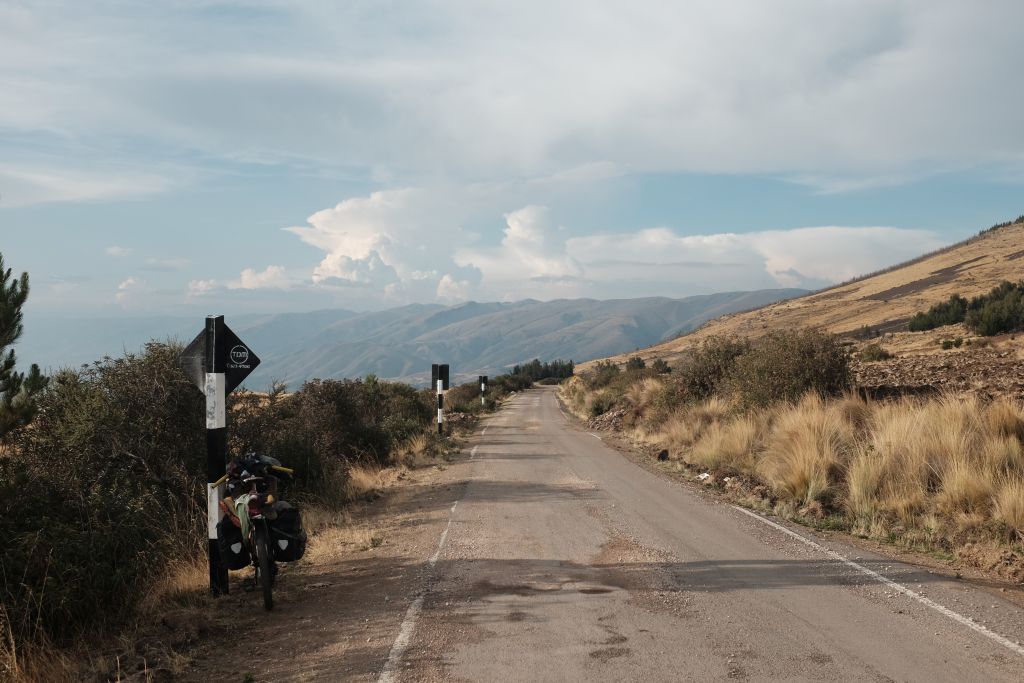
The good road down to Marapata